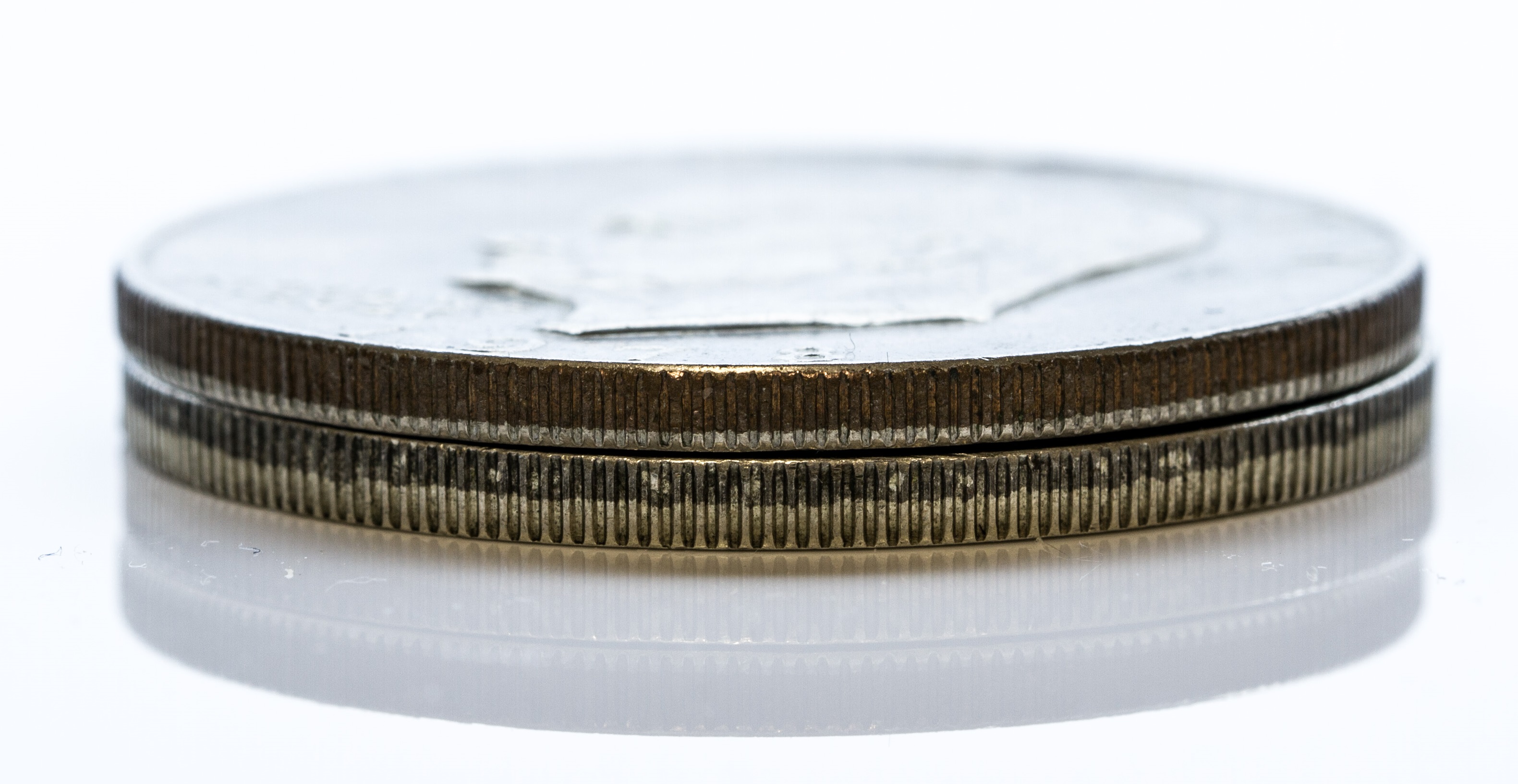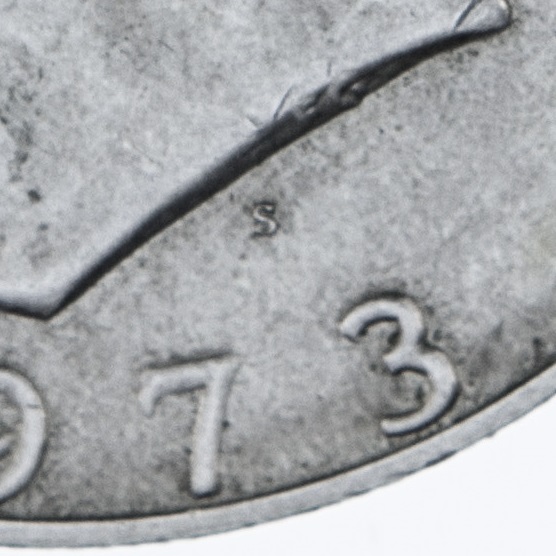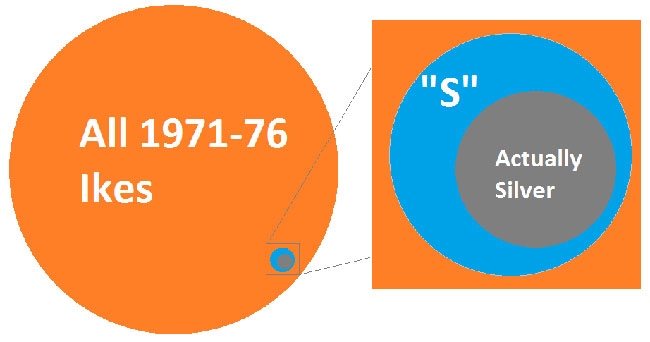"Tricky Ikes" - The Story of the Silver Eisenhower Dollar
One of the most confusing facets of collecting 90% silver U.S. coins, "junk silver", is the Eisenhower Dollar. In this article, we hope to explain it so that everyone can understand the "Tricky Ike."
The last 90% silver "silver dollar" was the 1921-1935 Peace Dollar. From 1935 to 1971, no dollar coins were minted in the United States. However, a movement started in Congress to honor the late President and WWII general Dwight D. Eisenhower with a new silver dollar.
Six years earlier, 90% silver circulating coinage had been terminated completely, due to the silver content exceeding the face value of the dime, quarter, and half dollar. Even so, some members of Congress thought it "disrespectful" and "demeaning" to put the image of the great man on a clad dollar coin. A compromise was finally reached. The circulating Eisenhower dollar would be clad copper, just like the dime, quarter, and newly clad Kennedy half dollar. (The last year the Kennedy half dollar contained silver was 1970.)
The U.S. Mint would make special uncirculated and proof clad silver Eisenhower dollars, with outer layers of 80% silver and 20% copper surrounding a core of 20.9% silver and 79.1% copper. The total silver content of the coin would amount to 40% silver, 60% copper. The uncirculated Eisenhower dollars were sold in a blue jacket, sealed in plastic with a blue and silver plastic disk that said "Eisenhower Uncirculated Silver Dollar" and cost $3. The proof Eisenhower dollars came in a sealed plastic card and a brown wood-finish box and cost $10. These coins are now known as "Blue Ikes" and "Brown Ikes" respectively.
These 40% silver coins weighed slightly more than the copper clad ones: 24.59 grams for the 40% silver coin, and 22.68 grams for the clad circulating coins. The silver coins were never intended for circulation, though they have been rarely found. Probably as a result of some kid raiding Grandpa's coin collection!
If you don't have a gram scale to check the weight of your Ike, there's another easy way. Just examine the edge:

Copper-clad Ike on top, Silver Ike on bottom.
The copper clad Ike on top has the brown center, like a modern quarter or dime. The 40% silver Ike below it is also clad, but the core is a dark grey instead of brown.
Another distinguishing feature of the 40% silver Eisenhower dollars is that every one of them was made at the San Francisco Mint. They will all have the "S" mintmark if they are silver:

San Francisco Mint mark on obverse of silver Eisenhower dollar.
If this was the whole story, the question of "Is my Eisenhower dollar silver?" would be pretty straightforward. But, of course, it isn't, else you wouldn't be confused and reading this article! Here's the final curveball:
The San Francisco Mint also made copper-clad circulating Eisenhower dollars, and they also carry the "S" mintmark.
So, all silver Ikes were made at the San Francisco Mint, BUT not all San Francisco Mint Ikes are silver.
In fact, less than 4% of all Eisenhower dollars were silver. Here is a handy infographic made by user "rddt1983" on the "Silverbugs" forum at Reddit that puts it all into perspective:

Percentage of all Eisenhower dollars that are silver
While the Eisenhower dollar was minted from 1971 to 1978, the last 40% silver type was the 1976 Bicentennial uncirculated and proof coins. The 1977-S and 1978-S proof Eisenhowers are copper clad, just like the circulating ones!

